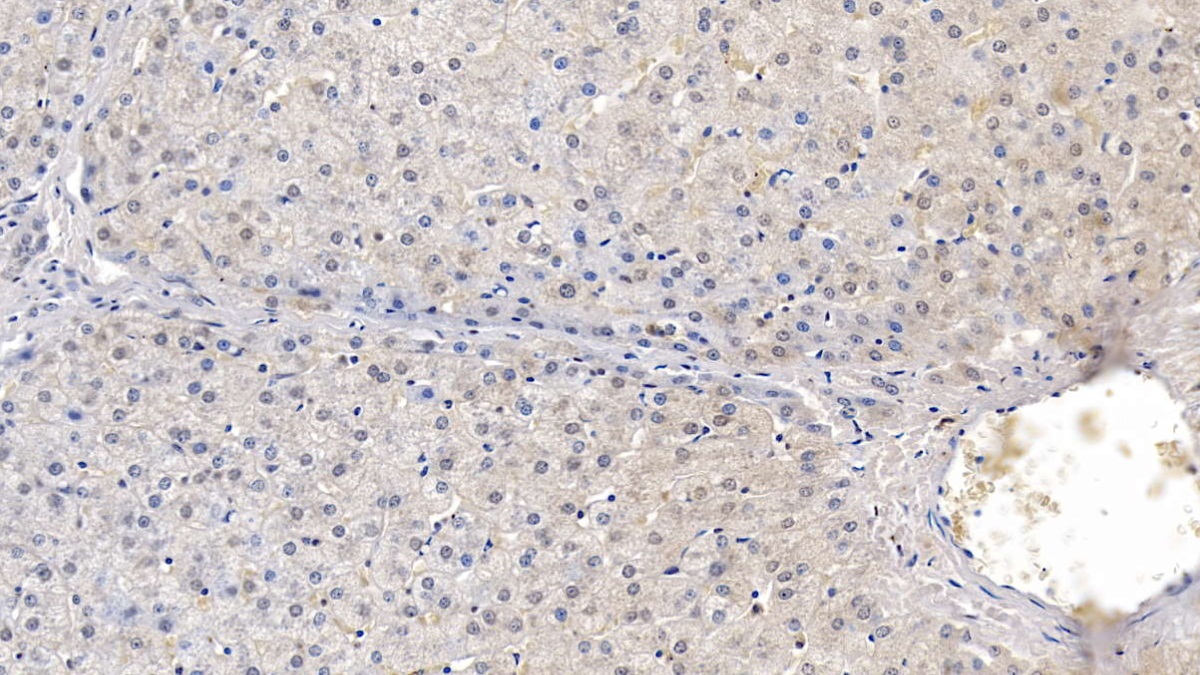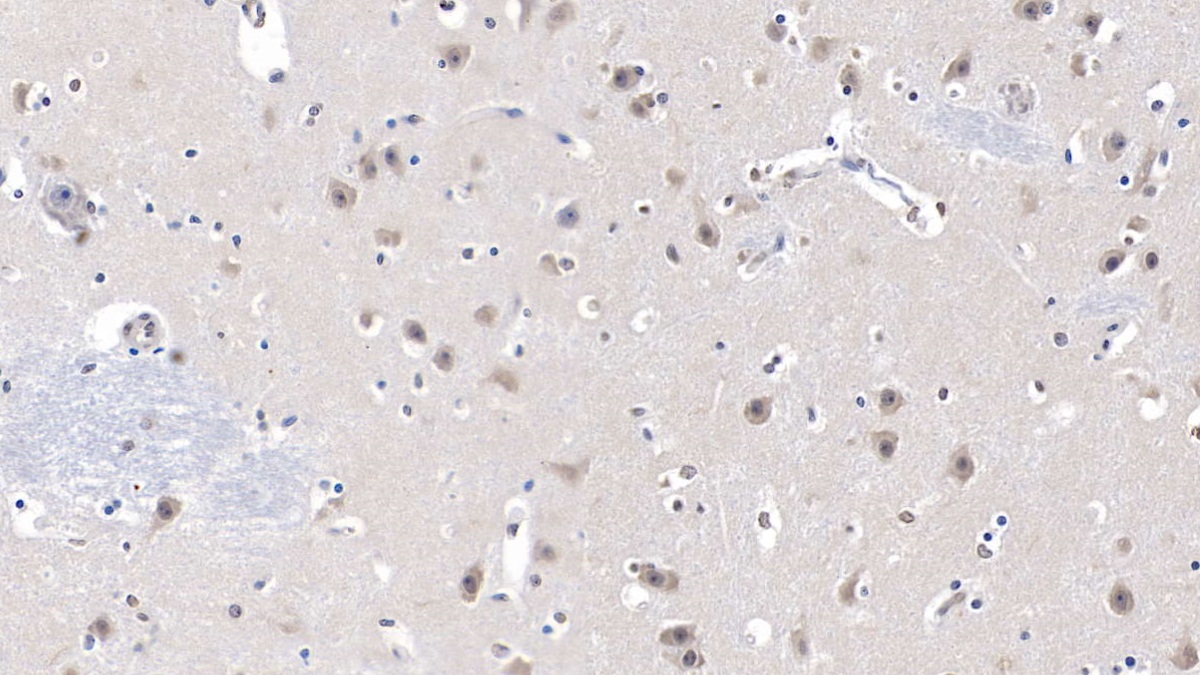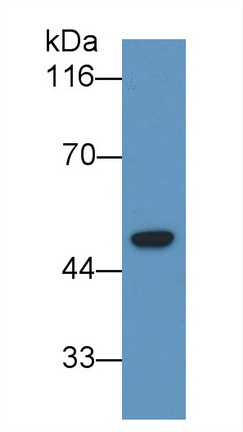Monoclonal Antibody to Lecithin Cholesterol Acyltransferase (LCAT) 

phosphatidylcholine-sterol O-acyltransferase; Phospholipid-cholesterol acyltransferase
Overview
Properties
- Product No.MAJ516Hu21
- Organism SpeciesHomo sapiens (Human) Same name, Different species.
- ApplicationsWB,IHC
If the antibody is used in flow cytometry, please check FCM antibodies.
Research use only - DownloadInstruction Manual
- CategoryEnzyme & Kinase
- SourceMonoclonal antibody preparation, Host Mouse
- Ig Isotype IgG2b Kappa, Clone Number C5
- PurificationProtein A + Protein G affinity chromatography
- LabelNone
- Immunogen RPJ516Hu01-Recombinant Lecithin Cholesterol Acyltransferase (LCAT)
- Buffer Formulation0.01M PBS, pH7.4, containing 0.05% Proclin-300, 50% glycerol.
- TraitsLiquid, Concentration 1mg/mL
Sign into your account
Share a new citation as an author
Upload your experimental result
Review

Contact us
Please fill in the blank.
Specifity
The antibody is a mouse monoclonal antibody raised against LCAT. It has been selected for its ability to recognize LCAT in immunohistochemical staining and western blotting.
Usage
Western blotting: 0.01-5µg/mL;
Immunohistochemistry: 5-20µg/mL;
Immunocytochemistry: 5-20µg/mL;
Optimal working dilutions must be determined by end user.
Storage
Store at 4°C for frequent use. Stored at -20°C in a manual defrost freezer for two year without detectable loss of activity. Avoid repeated freeze-thaw cycles.
Stability
The thermal stability is described by the loss rate. The loss rate was determined by accelerated thermal degradation test, that is, incubate the protein at 37°C for 48h, and no obvious degradation and precipitation were observed. The loss rate is less than 5% within the expiration date under appropriate storage condition.
Giveaways
Increment services
-
 Antibody Labeling Customized Service
Antibody Labeling Customized Service
-
 Protein A/G Purification Column
Protein A/G Purification Column
-
 Staining Solution for Cells and Tissue
Staining Solution for Cells and Tissue
-
 Positive Control for Antibody
Positive Control for Antibody
-
 Tissue/Sections Customized Service
Tissue/Sections Customized Service
-
 Phosphorylated Antibody Customized Service
Phosphorylated Antibody Customized Service
-
 Western Blot (WB) Experiment Service
Western Blot (WB) Experiment Service
-
 Immunohistochemistry (IHC) Experiment Service
Immunohistochemistry (IHC) Experiment Service
-
 Immunocytochemistry (ICC) Experiment Service
Immunocytochemistry (ICC) Experiment Service
-
 Flow Cytometry (FCM) Experiment Service
Flow Cytometry (FCM) Experiment Service
-
 Immunoprecipitation (IP) Experiment Service
Immunoprecipitation (IP) Experiment Service
-
 Immunofluorescence (IF) Experiment Service
Immunofluorescence (IF) Experiment Service
-
 Buffer
Buffer
-
 DAB Chromogen Kit
DAB Chromogen Kit
-
 SABC Kit
SABC Kit
-
 Long-arm Biotin Labeling Kit
Long-arm Biotin Labeling Kit
-
 Real Time PCR Experimental Service
Real Time PCR Experimental Service
Citations
- Plasma phospholipase, γ‐CEHC and antioxidant capacity in fibromyalgiaPubMed: 26585319
- Alteration of Lysophosphatidylcholine-Related Metabolic Parameters in the Plasma of Mice withExperimental Sepsis.pubmed:28028754
- A combined biomarker panel shows improved sensitivity for the early detection of ovarian cancer allowing the identification of the most aggressive type II tumours.pubmed:28664912
- Lipid-lowering effects of medium-chain triglyceride-enriched coconut oil in combination with licorice extracts in experimental hyperlipidemic micePubmed: 30244576
- Identification and validation of differentially expressed proteins in serum of CSU patients with different duration of wheals using an iTRAQ labeling, 2D‑LC‑MS/MSDoi: 10.3892/etm.2018.6818
- Diagnosis of epithelial ovarian cancer using a combined protein biomarker panel.Pubmed: 31388184
- The synergistic mechanism of total saponins and flavonoids in Notoginseng− Safflower pair against myocardial ischemia uncovered by an integrated …Pubmed: 32739736
- Pharmacokinetics/pharmacometabolomics-pharmacodynamics reveals the synergistic mechanism of a multicomponent herbal formula, Baoyuan decoction?¡
- Defects in a liver-bone axis contribute to hepatic osteodystrophy disease progressionPubmed:35235775









